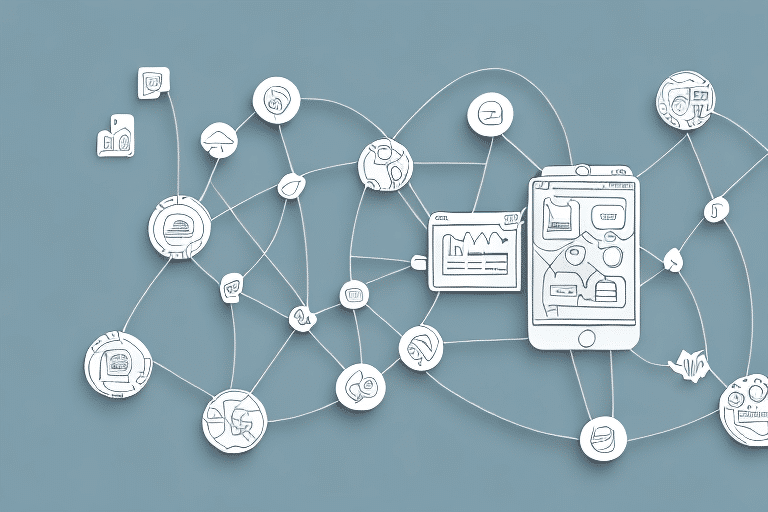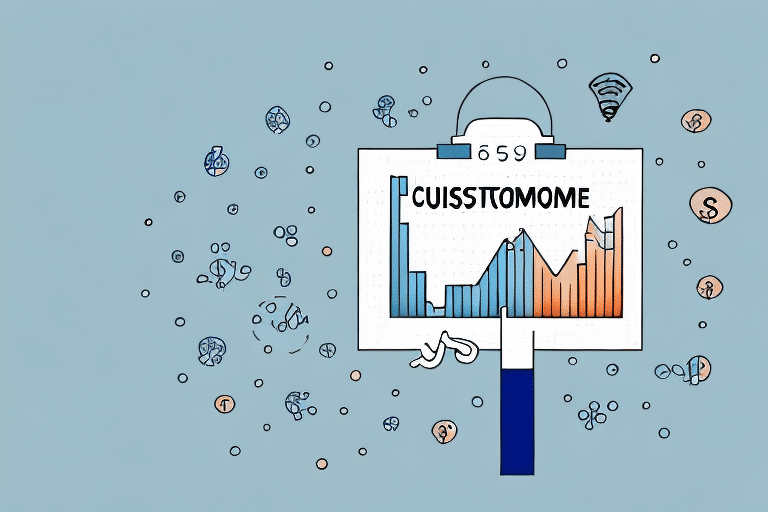Maximizing Customer Retention Through Digital Marketing
In today's competitive business landscape, customer retention is more critical than ever. With the digital ecosystem offering an abundance of choices and information, keeping customers loyal requires strategic and innovative digital marketing efforts. This article delves into the significance of customer retention in the digital age and outlines effective strategies to enhance it through comprehensive digital marketing techniques.
The Importance of Customer Retention in the Digital Age
Retaining existing customers is fundamental to the sustainability and growth of any business. According to a Harvard Business Review study, increasing customer retention rates by just 5% can lead to an increase in profits of 25% to 95%. Loyal customers not only contribute to steady revenue streams but also act as brand ambassadors, providing valuable referrals and feedback.
In the digital age, the ease with which customers can switch to competitors intensifies the need for effective retention strategies. With a myriad of options available at their fingertips, businesses must prioritize customer satisfaction and engagement to maintain a loyal customer base.
Exceptional customer service remains a cornerstone of customer retention. In an era where instant gratification is expected, businesses must provide swift and personalized responses to inquiries and issues. Leveraging data analytics can further enhance understanding of customer behavior, enabling businesses to tailor their offerings to meet evolving customer needs.
Understanding the Customer Lifetime Value (CLV)
Customer Lifetime Value (CLV) is a pivotal metric that estimates the total revenue a business can expect from a single customer account throughout the business relationship. Understanding CLV allows businesses to make informed decisions about marketing investments, customer acquisition costs, and retention strategies.
To calculate CLV, multiply the average purchase value by the average purchase frequency rate, and then multiply that by the average customer lifespan:
CLV = Average Purchase Value x Average Purchase Frequency Rate x Average Customer Lifespan
It's important to recognize that CLV is dynamic and influenced by factors such as customer behavior shifts, market trends, and competitive actions. Regularly updating CLV calculations ensures that businesses can adapt their strategies to maintain profitability and customer satisfaction.
Identifying Key Metrics for Customer Retention
Measuring the effectiveness of customer retention strategies is essential for continuous improvement. Key metrics to monitor include:
- Customer Churn Rate: The percentage of customers who discontinue their relationship with a business over a specific period.
- Customer Lifetime Value (CLV): As previously discussed, this metric predicts the total revenue from a customer over their entire relationship with the business.
- Net Promoter Score (NPS): A gauge of customer loyalty based on the likelihood of customers recommending the business to others.
- Customer Satisfaction Score (CSAT):strong> Measures how satisfied customers are with a company's products or services, typically obtained through surveys.
- Average Revenue Per User (ARPU): The average revenue generated per customer, helping identify high-value customers.
Monitoring these metrics provides actionable insights, enabling businesses to refine their retention strategies and address potential issues proactively.
Building a Comprehensive Customer Retention Strategy
Developing a robust customer retention strategy involves multiple facets of digital marketing. The following strategies can significantly enhance customer loyalty and retention:
Personalizing Your Approach
Personalization is pivotal in creating meaningful customer experiences. By analyzing customer data, businesses can segment their audience based on behaviors and preferences, allowing for tailored communication and offers. Personalized recommendations, customized promotions, and targeted content can significantly boost engagement and loyalty.
Leveraging Social Media
Social media platforms offer unparalleled opportunities for engaging with customers. By fostering a community through consistent interaction, businesses can build strong relationships with their audience. Social media also serves as a valuable channel for providing customer support, addressing concerns promptly, and showcasing brand values.
Effective Email Marketing
Email marketing remains a highly effective tool for customer retention. Sending personalized and relevant emails keeps customers informed about new products, exclusive offers, and valuable content. Automation tools can help in delivering timely messages that resonate with individual customer needs.
Creating Engaging Content
Content marketing plays a crucial role in establishing brand authority and maintaining customer interest. High-quality blogs, videos, infographics, and other content forms can educate and entertain customers, fostering a deeper connection with the brand.
Enhancing Customer Experience
A seamless and enjoyable customer experience is essential for retention. This includes optimizing website navigation, ensuring fast load times, simplifying the checkout process, and providing reliable product services. Positive experiences encourage repeat business and long-term loyalty.
Utilizing Data Analytics
Data analytics offers deep insights into customer behavior and preferences. By analyzing patterns and trends, businesses can make data-driven decisions to refine their retention strategies, identify at-risk customers, and implement proactive measures to retain them.
Implementing Loyalty Programs
Loyalty programs incentivize repeat purchases by offering rewards, discounts, or exclusive benefits. Such programs not only encourage customers to continue engaging with the brand but also provide valuable data on purchasing habits and preferences.
Best Practices for Measuring and Analyzing Customer Retention
To effectively measure and analyze customer retention, consider the following best practices:
- Regularly Track Key Metrics: Continuously monitor metrics like churn rate, CLV, and NPS to assess the effectiveness of retention strategies.
- Utilize Data Analytics Tools: Employ advanced analytics tools to gain deeper insights into customer behavior and preferences.
- Gather Customer Feedback: Collect feedback through surveys, reviews, and direct interactions to identify areas for improvement.
- Segment Your Customer Base: Categorize customers based on demographics, behaviors, and preferences to tailor retention efforts effectively.
- Map the Customer Journey: Understand and optimize every touchpoint in the customer journey to ensure a positive and consistent experience.
Implementing these practices ensures a thorough understanding of customer dynamics, enabling businesses to enhance their retention strategies continually.
Innovative Approaches to Boosting Customer Retention through Digital Marketing
Staying ahead in customer retention requires embracing innovative digital marketing approaches. Here are some cutting-edge strategies:
- Machine Learning for Personalization: Utilize machine learning algorithms to analyze customer data and deliver highly personalized recommendations and content.
- Chatbots for 24/7 Support: Implement AI-powered chatbots to provide instant customer support, addressing queries and issues in real-time.
- Augmented Reality (AR) and Virtual Reality (VR): Integrate AR and VR technologies to offer immersive brand experiences, enhancing customer engagement.
- Interactive Content: Develop quizzes, polls, and interactive videos to engage customers actively and gather valuable insights.
- Omnichannel Marketing: Ensure a seamless and consistent customer experience across all digital channels, from social media to email to mobile apps.
Adopting these innovative approaches not only enhances customer experience but also distinguishes the brand in a crowded digital marketplace.
Case Studies: Successful Examples of Maximizing Customer Retention through Digital Marketing
Examining successful case studies provides valuable insights into effective customer retention strategies:
- Amazon: Amazon excels in customer retention through personalized recommendations, a user-friendly interface, and its Prime membership program, which offers benefits like free shipping and exclusive content.
- Sephora: Sephora leverages personalized product recommendations, a robust loyalty program, and engaging content across its website and social media channels to maintain high customer loyalty.
- Netflix: Netflix uses sophisticated algorithms to offer personalized viewing suggestions and invests heavily in original content, ensuring continuous customer engagement.
Additionally, Spotify enhances retention by offering personalized playlists, exclusive content, and benefits for premium subscribers, while Starbucks utilizes its mobile app to provide seamless ordering, rewards, and personalized offers, fostering a loyal customer base.
Conclusion: The Future of Digital Marketing and Customer Retention
As the digital landscape continues to evolve, customer retention will remain a critical focus for businesses aiming for long-term success. Embracing advanced digital marketing strategies—such as personalization, social media engagement, content marketing, data analytics, and innovative technologies—will be paramount in retaining customers and fostering loyalty. By prioritizing exceptional customer experiences and leveraging data-driven insights, businesses can navigate the challenges of the digital age and sustain growth through a loyal and engaged customer base.








